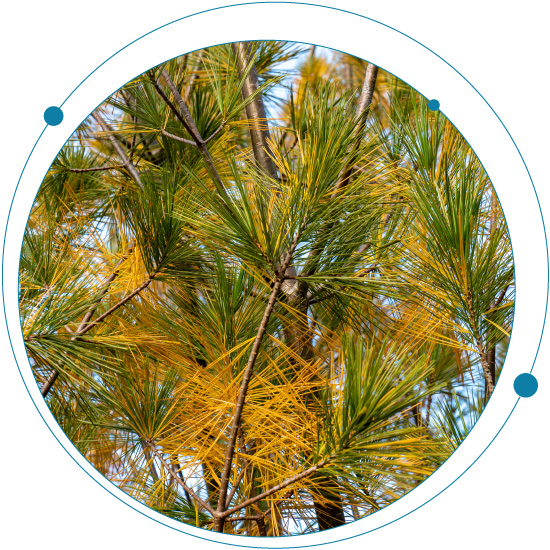As an ever-expanding group of chemicals, per- and polyfluoroalkyl substances (PFAS) require novel techniques to monitor their current and historical presence in the environment. Concerns over exposure to PFAS chemicals continue to grow, with some having known toxic characteristics and the potential effects of others remaining unknown.1 In addition, while PFAS are one of the most persistent synthetic chemicals to date, most of them hardly degrade in the environment.2 So, how long do traces of PFAS last in our environment? Two tools used to help answer this question are active samplers and passive samplers.
Tags

Telling the PFAS story with pine needles
As an ever-expanding group of chemicals, per- and polyfluoroalkyl substances (PFAS) require novel techniques to monitor their current and historical presence in the environment. Concerns over exposure to PFAS chemicals continue to grow, with some having known toxic characteristics and the potential effects of others remaining unknown.1 In addition, while PFAS are one of the most persistent synthetic chemicals to date, most of them hardly degrade in the environment.2 So, how long do traces of PFAS last in our environment? Two tools used to help answer this question are active samplers and passive samplers.

The hidden ingredient in anti-fog sprays: PFAS
A recent study led by researchers from Duke University, conducted with colleagues from Wayne State University and the University of North Carolina at Charlotte, found that four of the top-rated anti-fog sprays contained up to 20.7 milligrams of per- and polyfluoroalkyl substances (PFAS) per milliliter of solution. This study has received a lot of exposure in popular media, and it should not be overlooked. The researchers used several creative approaches to obtain a comprehensive characterization of the anti-fog sprays, including using total organic fluorine measurements, GC-MS methods and both nominal mass and accurate mass instruments. A unique finding of the study was the detection of fluorotelomer ethoxylates (FTEOs), which are relatively unknown PFAS compounds.

Top questions about the exposome of PFAS revealed
According to the CDC, the exposome is “the measure of all the exposures of an individual in a lifetime and how those exposures relate to health.”

Meet regulatory limits: Characterize and quantify PFAS and GenX in water using liquid chromatography-mass spectrometry
Per- and polyfluorinated alkyl substances (PFAS) continue to persist throughout the environment.Concerns about the health dangers posed by these contaminants, along with the possibility of biological toxicity of legacy PFAS such as perfluorooctanoic acid (PFOA) and...

Packaging with PFAS is not all it’s wrapped up to be
In the 1930s, a research chemist accidentally created polytetrafluorethylene (PTFE). The discovery put him in the National Inventors Hall of Fame when PTFE was later commercialized under the trade name Teflon. Nobody anticipated the impact this invention would have on...
No Results Found
The page you requested could not be found. Try refining your search, or use the navigation above to locate the post.
No Results Found
The page you requested could not be found. Try refining your search, or use the navigation above to locate the post.



 Contact Support
Contact Support